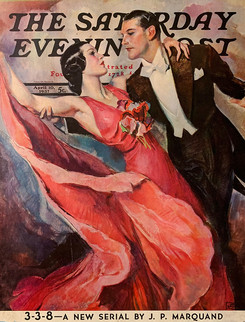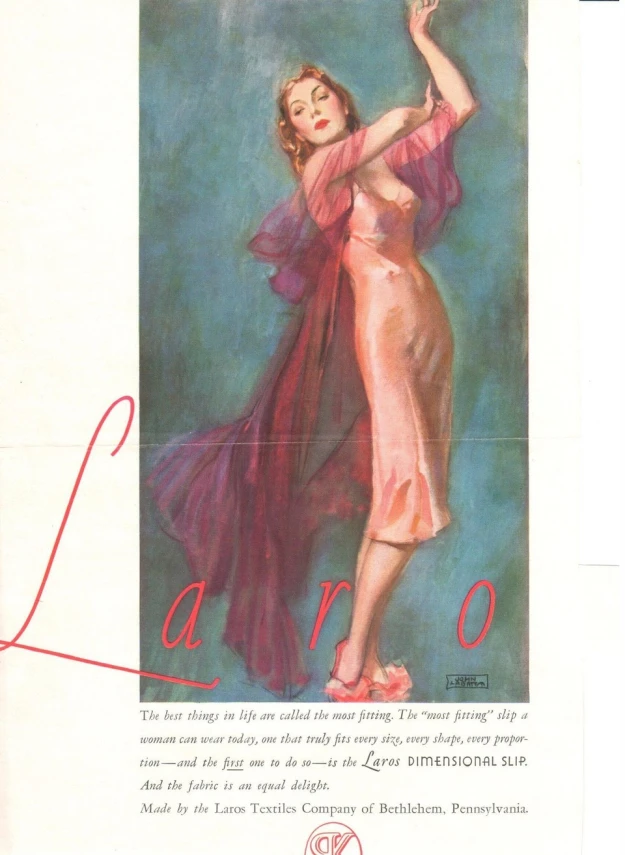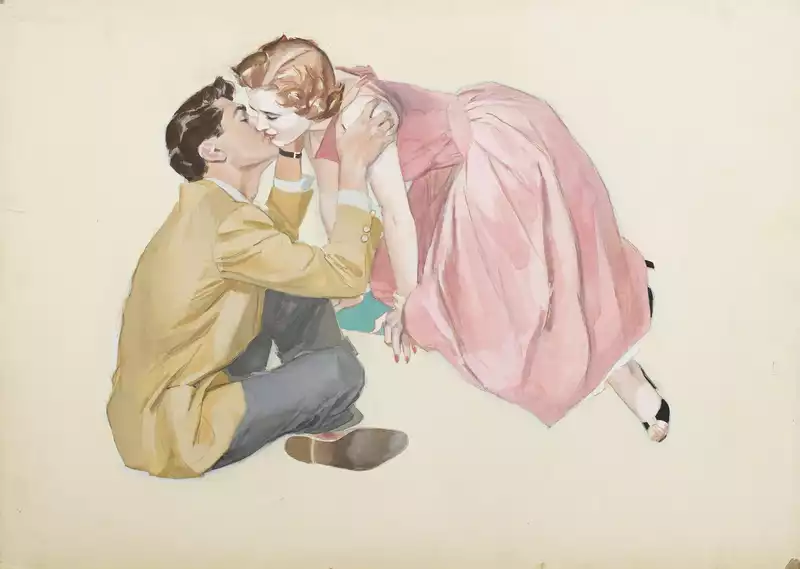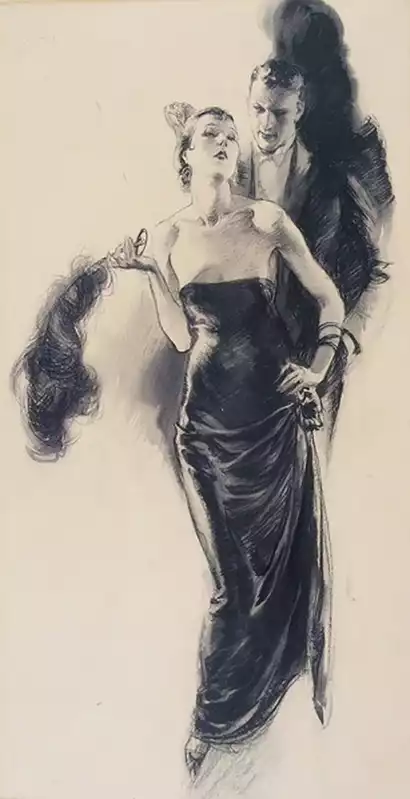John LaGatta - Gifted Gallery
- Lilium
- Jun 25
- 4 min read

John LaGatta, born 26 May 1894, also spelled La Gatta, was an advertising illustrator active during the first half of the 20th century.
John LaGatta was born in Naples, Italy, the son of an educated father and a mother from an old and well-connected family which traced their origins back to the Count of Anjou, brother of King Louis IX of France. LaGatta was a sickly child and around the age of four his mother died in childbirth. The family later emigrated to the United States.
LaGatta showed an early talent for art. In the autumn of 1909 at the age of 15, he enrolled in the New York School of Fine and Applied Arts (now Parsons School of Design) where he excelled at charcoal draftsman and the portrayal of form and motion. He studied under artists Kenneth Hayes Miller and Frank Alvah Parsons. LaGatta was selling sketches to Life magazine to pay for his formal education and after graduation he continued working for Life and doing advertising illustrations for N. W. Ayer advertising agency.
In 1914, he moved to Philadelphia to design film posters for Lubian Film Company. In 1916, he moved to work for art studio owner Nelson Amsden. In Cleveland, LaGatta met Amsden's cousin, Florence Eugenia Olds, an art student at the Cleveland School of Art. In 1918 they married and had two children, John Hawley Olds La Gatta and Jeanne Mehit (ne LaGatta).
An assignment from N. W. Ayer advertising agency of Philadelphia brought LaGatta back to New York City in 1918. He received commissions for illustrations for Society Brand men's work clothes, Blue Buckle overalls, and General Motors. After six months he resigned from N. W. Ayer and spent six months creating a portfolio of paintings using his wife Florence as the model. These led to new commissions.
His new advertising clients included Resinol soap, Lucky Strikes, International Silver Company, Ajax Rubber Company, Laros Lingerie, Hoover vacuum cleaners, Paramount Pictures, Campbell's Soup, Ivory Soap, Kellogg's, Johnson & Johnson, Spaulding Swimwear, and Chase and Sanborn Coffee.
LaGatta did work for many of America's most prominent magazines including Ladies' Home Journal, Cosmopolitan, Woman's Home Companion, Redbook, McCall's, and Harper's Bazaar. He painted twenty-two covers for the Saturday Evening Post, who described his work, "His art was a window into a world of cool elegance most readers would not otherwise be aware of."
Fellow illustrator Frederick R. Gruger, upon seeing LaGatta's images of women, said he painted "chrome-plated women." LaGatta joined the Guild of Freelance Artists. Its membership also included Norman Rockwell, Charles Dana Gibson and Neysa McMein. He was a member of the Society of Illustrators from 1922 to 1939, he was the interim president in 1927.

LaGatta worked almost exclusively on illustration board, drawing with charcoal. He then sprayed the drawing with fixative and over-painted with thin oil paint which allowed the charcoal lines to show through. He often finished a painting by adding color using a palette knife to build texture. He was a frequent judge of the Miss America pageant and found models there, as well as from model agencies, the theatre, and women he met. Once he found a model, he often painted her for years.
At the peak of his career in the 1930s, LaGatta could produce an illustration a day. W. Thornton "Pete" Martin, editor of The Saturday Evening Post, once commented, "I don't see how it is humanly possible for you to deliver six pictures at once and still keep the quality of your work at its stratospheric LaGatta high, but it is a neat trick if you can do it." During the 1930s, when the average income was $2,000 to $4,000 a year, LaGatta earned over $100,000 a year. Through the Depression he earned more than the President of the United States. In addition to a studio in Manhattan, he bought a house in Sands Point, New York, on the north shore of Long Island, and a home in Woodstock, New York. He owned a custom-made Packard Phaeton and a forty-five-foot yacht.
By the 1940s, LaGatta's illustrations were no longer in demand as National magazines and advertisers began to use more photography. He rented out the Sands Point house and moved to Woodstock, New York. He was commissioned to create a daily comic strip, Sally Forth, with California screenwriter Borden Chase. The strip was syndicated but La Gatta found it too time-consuming and dropped the project. LaGatta moved his family to California in 1941.
In California he continued his advertising commissions. He created illustrations for Woodbury Soap and Laros Silk Lingerie. However, the income was not enough and LaGatta sold his yacht and turned to portrait painting. He was plagued with health problems (during his life he had 17 stomach surgeries) and struggled financially.
In 1956 Edward A. "Tink" Adams, the founder of what is now the Art Center College of Design in Pasadena, California, hired La Gatta as an instructor. LaGatta was a demanding but popular taskmaster and many of his pupils went on to careers in illustration; including Bob Peak, Bart Forbes, Mark English, Charles McVicker and Don Shaeffer, the future head of the famous Charles E. Cooper Studio. The college had a mandatory retirement age of 75. John LaGatta taught his last art class in 1968, and was awarded an Honorary Degree of Doctor of Fine Arts. He continued to paint for shows and galleries.
John LaGatta died on 21 January 1977, aged 83, in Santa Monica, California. His wife Florence died in 23 Sep 1992, aged 97. In 1984 the Society of Illustrators posthumously inducted John LaGatta into its Illustrators Hall of Fame and in 2011 honoured him as a Distinguished Educator in the Arts.



































































































































